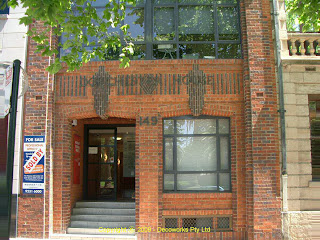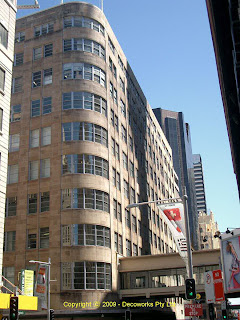Tea Gardens Hotel

The Tea Gardens Hotel is located at 2-4 Bronte Road, Bondi Junction. The original licence for a hotel on this site was issued in 1854. It was known as the Waverley Tea Gardens and was popular destination with day visitors when the trams first arrived in 1881. The site was subdivided in 1874 and a second storey added. The building was remodelled in about 1940 to reflect the Art Deco style popular at the time. Today the upstairs function area, Circa, has a sun-drenched deck built over the front awning which destroys the look of the hotel. The main room off the deck still retains many of its original art deco features. Hotel corner facade Sources: Sydney Heritage Listings

















